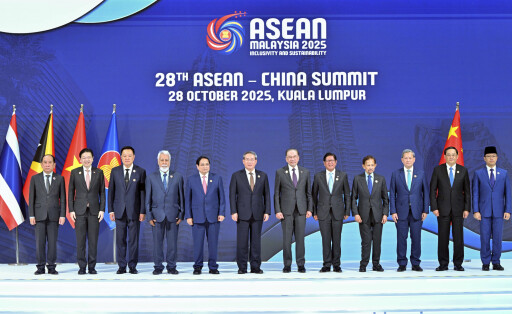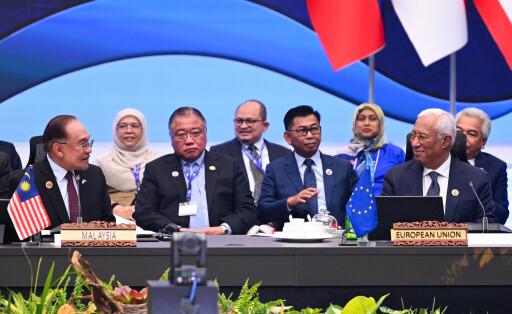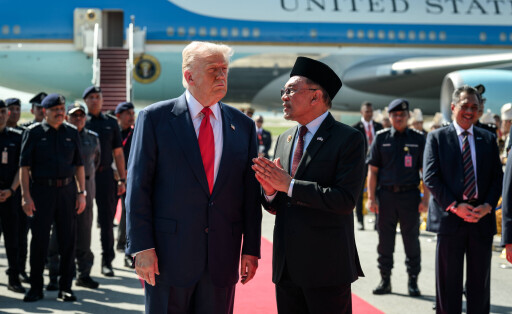The Association of Southeast Asian Nations, better known as ASEAN, is a political and economic organization consisting of ten Southeast Asian countries. It was founded on August 8, 1967 to promote political stability, economic development and social progress in the countries of Southeast Asia. The Table.Media editorial team has all the background information on what makes this organization special, its member states, its history, goals and development as well as its importance in the region and on an international level. What is ASEAN? ASEAN, short for the Association of Southeast Asian Nations, is a regional organization founded in 1967 to strengthen cooperation and a sense of togetherness among Southeast Asian countries. The organization is headquartered in Jakarta, Indonesia, and aims to promote peace, stability, economic progress and social development in the region. ASEAN community of states The ASEAN states form a community of ten member countries that work together to achieve common goals and promote regional integration. The member countries are: Each member country has one vote in the organization's decision-making processes. ASEAN region The ASEAN region covers a geographical area in Southeast Asia that spans a variety of climates, landscapes and cultures. It includes parts of the Asian mainland and the islands of the Malay Archipelago and stretches from the Indian Ocean to the Pacific Ocean. ASEAN: Founding ASEAN was founded on August 8, 1967 by the Bangkok Declaration, which was signed by the five founding members – Indonesia, Malaysia, the Philippines, Singapore and Thailand. The main objective of the founding was to promote political and economic cooperation in the region and to support the stability and development of the Southeast Asian countries. Since its foundation, the organization has grown to ten member countries, including Brunei, Vietnam, Laos, Myanmar and Cambodia. ASEAN Charter The ASEAN Charter, also known as the ASEAN Charter, is the legal foundation of the organization and came into force on 15 December 2008. It sets out the objectives, principles, rights and obligations of the member countries and strengthens the institutional mechanisms and decision-making within the organization. ASEAN: Development Since its inception, ASEAN has become a major political, economic and cultural force in the region. The organization has launched a variety of initiatives and programs to promote regional integration, including the creation of a free trade area, the promotion of investment, the strengthening of social cooperation and the promotion of intercultural dialogue. ASEAN: History ASEAN's history is characterized by political challenges, economic growth and social change. Since its inception, the organization has witnessed a series of milestones and events, including the expansion of membership to ten countries, the adoption of the ASEAN Charter, and the holding of summits and conferences to promote cooperation. What are ASEAN's goals? ASEAN's objectives are diverse and include the promotion of peace, stability, economic prosperity and social development in the region. The organization's main goals include strengthening regional integration, promoting mutual understanding and respect among member countries, and creating a common market and economic community. Here, the Table.Media editorial team sheds light on ASEAN's main objectives and why they are crucial for the region. Overall, ASEAN pursues a variety of goals in the fields of economic integration, social development and political stability, which are aimed at improving the quality of life of its people and contributing to global stability and development. For more information on ASEAN's goals and initiatives, follow our related articles and analysis. What role does China play in ASEAN? China is playing an increasingly central role in the ASEAN region, with far-reaching implications at political, economic and cultural levels. This article highlights the key aspects of the dynamic relationship between China and the ASEAN countries. Overall, China is a key player in the ASEAN region and the relationship is characterized by a mix of cooperation and competition. For more insights into China's role in the ASEAN region, stay up to date with our articles and analysis. ASEAN Summit The ASEAN Summit is the most important meeting of the heads of state and government of the member countries and takes place once a year. The summit provides an opportunity for the leaders of the region to meet to discuss important issues, make policy decisions and promote cooperation in various areas. ASEAN-EU Relations between ASEAN and the European Union (EU) are characterized by cooperation and partnership in various areas, including trade, investment, development aid, culture and education. The two organizations have regular dialogues and meetings to discuss common interests and deepen cooperation. ASEAN and the future Overall, ASEAN plays a crucial role in promoting peace, stability and economic prosperity in Southeast Asia. The organization has a long history of cooperation and commitment to regional integration and remains an important voice on the international stage. By strengthening cooperation and promoting mutual understanding, ASEAN is helping to create a peaceful and prosperous future for Southeast Asian countries. The Table.Media editorial team reports on how ASEAN is progressing and has all the news, analyses and background information on this topic.

Thailand-Cambodia conflict: Defense officials plan talks
ASEAN foreign ministers have initiated a resumption of talks between Thailand and Cambodia at a special meeting. A meeting between defense representatives of both countries is scheduled for Dec. 24.
By Julia Fiedler









